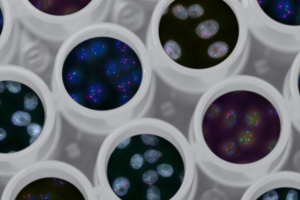Clinical trial phases for medications and treatments
There are four different phases of a clinical trial. Each phase is represented by a roman numeral. Clinical trials are also referred to as clinical studies.
 Clinical trial phases are very important because they enable researchers to properly assess the safety and effectiveness of new treatments before being approved for use by the general public.
Clinical trial phases are very important because they enable researchers to properly assess the safety and effectiveness of new treatments before being approved for use by the general public.
New medications must be tested in Phase I, II and III trials before they are approved.
Find out more about clinical trial phases for medical devices.
Find out more about what happens in each phase below.
Phase I
10 - 100 participants
Purpose of this phase
- First study in people
- Tests safety of new treatment
- Finds the safest dose and the best way a treatment can be given
- Identifies side effects
- Studies how the intervention works with other medicines or food (interactions)
How it works
- Participants are given a fixed dose and watched closely for side effects
- If no side effects, dose is increased in next group of participants, this continues until noticeable side effects appear
Likely outcomes
- Patients sometimes benefit from having the new treatment but great improvements in their condition are uncommon
Phase II
100 - 300 participants
Purpose of this phase
- Builds on the results of Phase I
- Continues to test safety of a medication
- Begins to assess how well a new treatment works on the disease
How it works
- Often focuses on one disease or cancer type
- All participants receive the same experimental treatment
- Sometimes randomised controlled trial, where participants are put into separate groups and given different treatments, which are then compared to see how well they treat the disease
Likely outcomes
- People often have treatment as an outpatient, but occasionally need to stay overnight in hospital for monitoring
Phase III
100s - 1000s of participants
Purpose of this phase
- Tests if the new treatment is better than the standard treatment
- Compares side effects, survival and quality of life
- Assesses whether the risks outweigh the benefits
- Collects information that allows new treatments and existing treatments to be used in new ways or for different diseases
How it works
- Uses two or more treatment groups – experimental and control
- Usually groups are randomised and sometimes 'blinded' (where the patient and/or trial staff don't know which treatment the patient is on)
- Placebo or standard of care may be used for comparison
- Runs over a long period of time
Likely outcomes
- Phase III trials help the Therapeutic Goods Administration (TGA) assess whether a new medication should be registered for use in Australia
Phase IV
1000s of participants
Purpose of this phase
- Identifies how well treatment works when used more widely
- Monitors the long-term benefits and risks
- Looks for other uses of the drug or treatment
How it works
- Carried out after a treatment has been registered by the TGA
- Usually run by pharmaceutical companies that make the product
- May be used as a way to provide early access to a drug after TGA approval but before Pharmaceutical Benefit Scheme (PBS) approval
- Sometimes called expanded access study
Note
- Not all treatments go through phase IV trials
- Phase IV trials are less common than Phase I, II and III trials